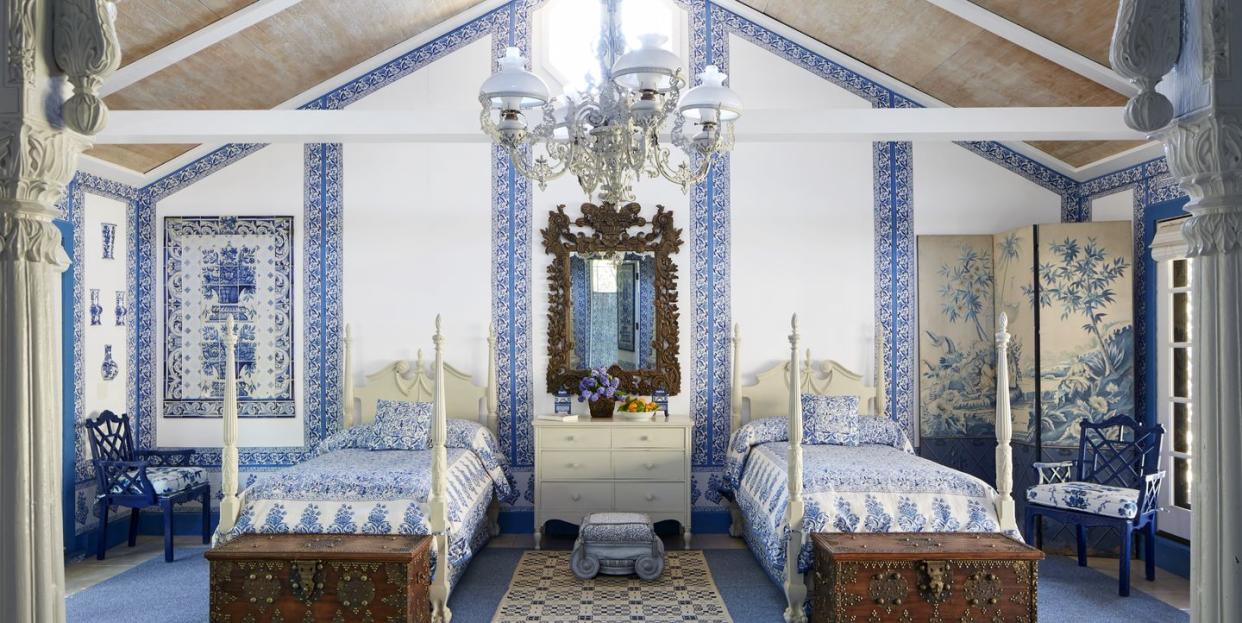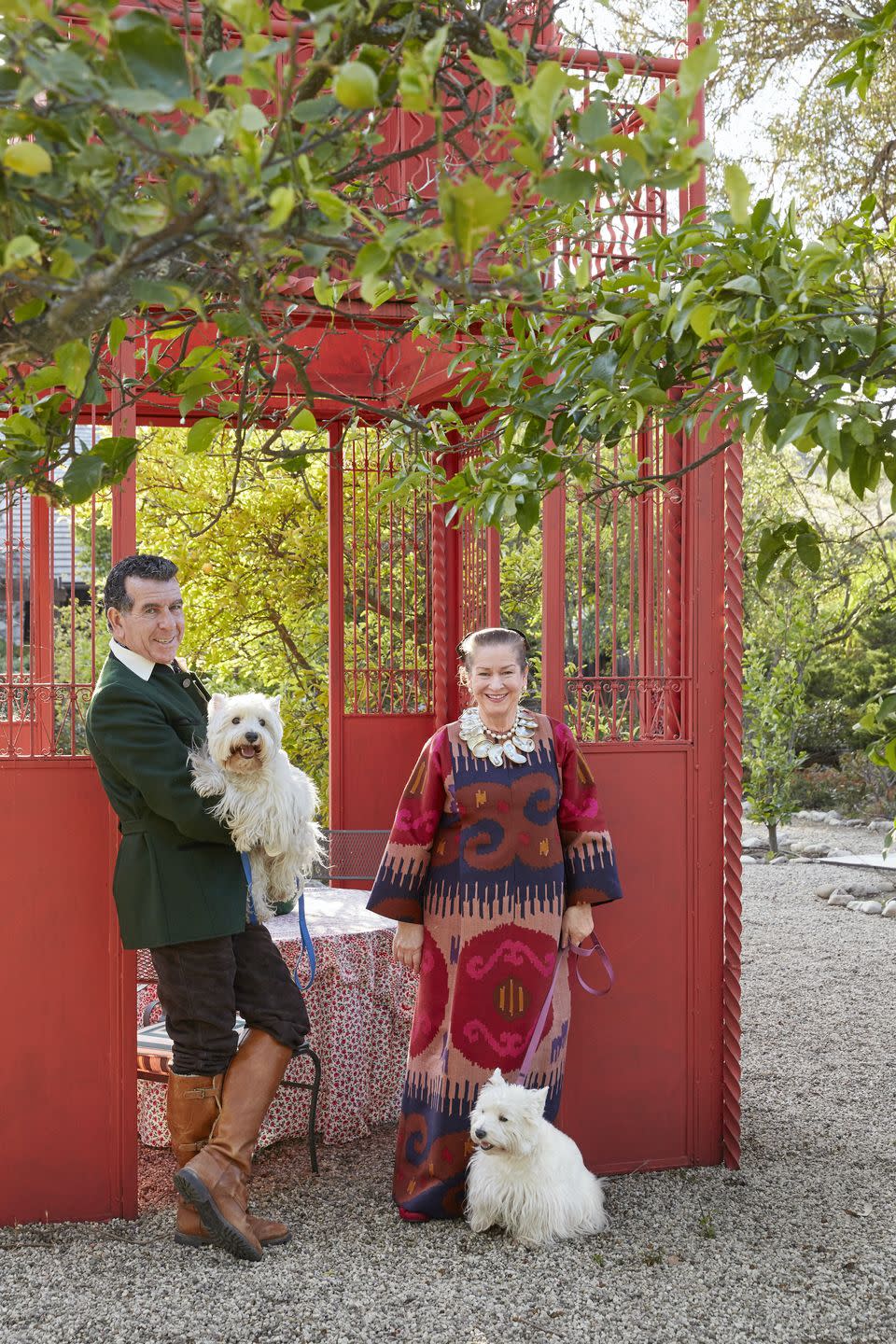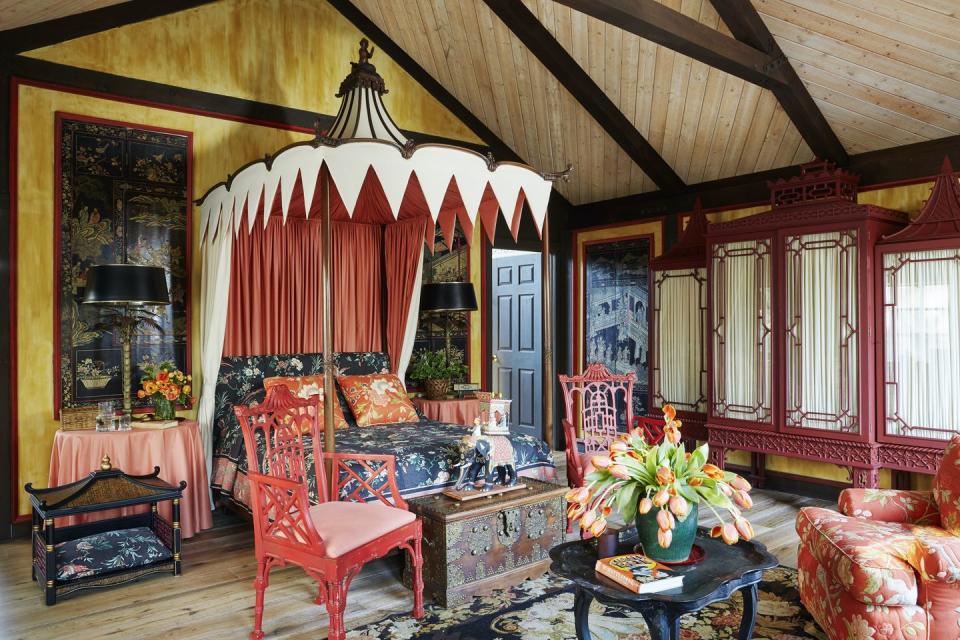Step Inside Decorator Hutton Wilkinson's Maximalist World

“I have exactly one pair of pants,” says Hutton Wilkinson. The California designer—whose jewelry and interiors exude maximalist panache—hasn’t fallen on hard times.
Rather, he is taking inventory of the uncharacteristically minimalist wardrobe he stocks at Argyle Farm, his 100-acre mountaintop retreat in Malibu. “A couple of shirts, some tennis clothes, and shoes,” he lists. “And swim trunks. That’s it. Very easy and thoughtless.”

Glorious abandon is, indeed, the point of this idyll overlooking the Pacific, a getaway that serves as an antidote to the glittery life he and his wife, Ruth, lead in Beverly Hills. In town, they preside over a three-story palazzo filled with Venetian paintings and leopard-print carpets—a house that’s a frequent setting for themed parties. “You are served drinks, and you dress up,” Wilkinson says. By contrast, he notes, “at the farm in Malibu, you get your own drinks—and you can wear whatever you like.” Wilkinson does know how to pile it on when he wants to. In 1970, in his teens, he went to work for the legendary decorator Tony Duquette, the undisputed master of “more is more.” For almost 30 years, the two men collaborated on everything from fanciful rooms to exotic baubles. Duquette died in 1999, and Wilkinson is today the president and creative director of TonyDuquette Studios, whose offerings include statement jewelry as well as home furnishings, such as malachite-patterned cottons for Jim Thompson, an exuberant abalone-shell chandelier for Baker, and sconces and pendants for Remains Lighting that evoke angular sunbursts and glamorous dandelions. (There is more to come: This fall, Wilkinson will debut Tony Duquettefurniture, lighting, and accessories with Maitland-Smith.)
When the Wilkinsons need a respite from work, they head for the hills to their “farm,” the center of which is an Adirondack-style lodge that they purchased some two decades ago. Built in the late 1940s of stone and rough-sawn lumber, the main house sits surrounded by meandering walkways, a vegetable garden, a tennis court, a sparkling pool, and all manner of architectural follies, including a wiry coral pagoda made from a vintage elevator cage that once whisked guests up and down in the Hollywood Hotel.

Inside, the story continues to unfold. The couple have introduced a range of beloved objects into the mix, from the plain to the pedigreed. In the latter category: a chinoiserie screen owned by the seminal decorator Elsie de Wolfe, an antique bed that once belonged to the family of Sir Winston Churchill’s mother, and Duquette-designed pieces aplenty, including elaborate chandeliers and whimsical seashell sconces created for the former California department-store chain Buffum's. There is no design plan, nor any strict criteria. “All houses should be arranged for the pleasure of the owner and nobody else,” Wilkinson says. “I think we all have a personal palette. Whatever catches our eyes will go together with anything else we have collected.”
A big night at the lodge—where there is no cell-phone reception or internet—doesn’t mean galas and gowns, it means literally gazing at “every star and constellation in the universe,” Wilkinson says. “And when it’s cold and overcast at the beach, we retreat above the clouds.”
This article originally appeared in the March/April 2017 issue of VERANDA. Interior design by Hutton Wilkinson; photography by Roger Davies; produced by Carolyn Englefield; written by Rob Brinkley.
You Might Also Like